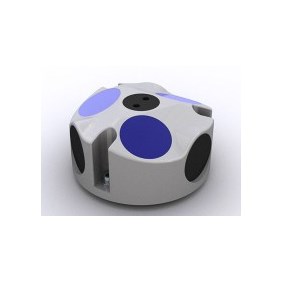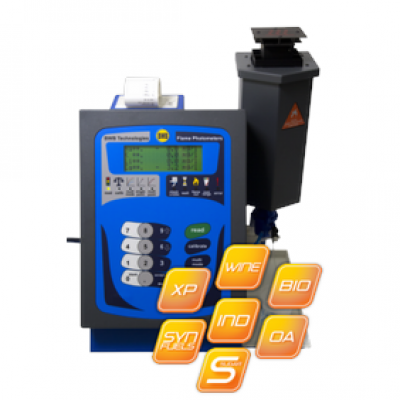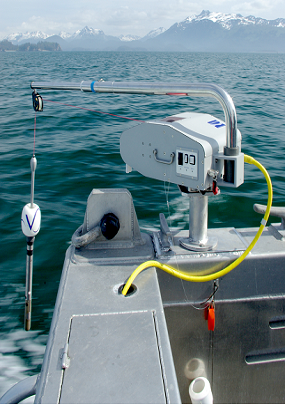The Aquadopp Z-cell is a hardware and firmware extension to the existing current profiler, the 1 MHz Aquadopp profiler. The instrument has the same specifications as the Aquadopp profiler but with the added benefit of a measurement cell located at the level of the instrument. The photos below shows how an extra set of transducers is embedded into the 1 MHz profiler head (left) and the 600 kHz head (right). 
Because the Z-cell requires an extra set of receiver channels, the Z-cell feature is not backward compatible with electronics shipped before 2010. Please note that the 1 MHz unit has three horizontal beams (at the same azimuth angle as the slanted beams but slightly offset) while the 600 kHz version only has two horizontal beams.
The near instrument data loss in traditional current profilers comes from the combination of mounting height, the electroacoustic blanking and the offset of the first measurement cell. In many applications this means that valuable and interesting information about the ocean current is lost. The Z-cell solves this problem by measuring the horizontal velocity at the level of the instrument.
The Aquadopp Z-cell can be mounted in the frame on the bottom or in a surface buoy. Preliminary studies show that the surface current can be quite different from what is normally observed 2-3 m below the surface. The addition of an extra cell is not just "nice to have" but has a profound impact on how we view and analyze ocean current data.

The Aquadopp Z-cell has an extra measurement cell at the level the instrument, providing additional ocean measurements.
The hardware foundation of the Z-cell is similar to that of the "Aquadopp profiler" - a small and easy-to-use current profiler has become a favorite for use in estuaries and shallow coastal water. With the introduction of the new "mid-life" electronics in 2008, it has become shorter by 10 cm, the current profiling range has increased, and the power consumption has come down even further.















